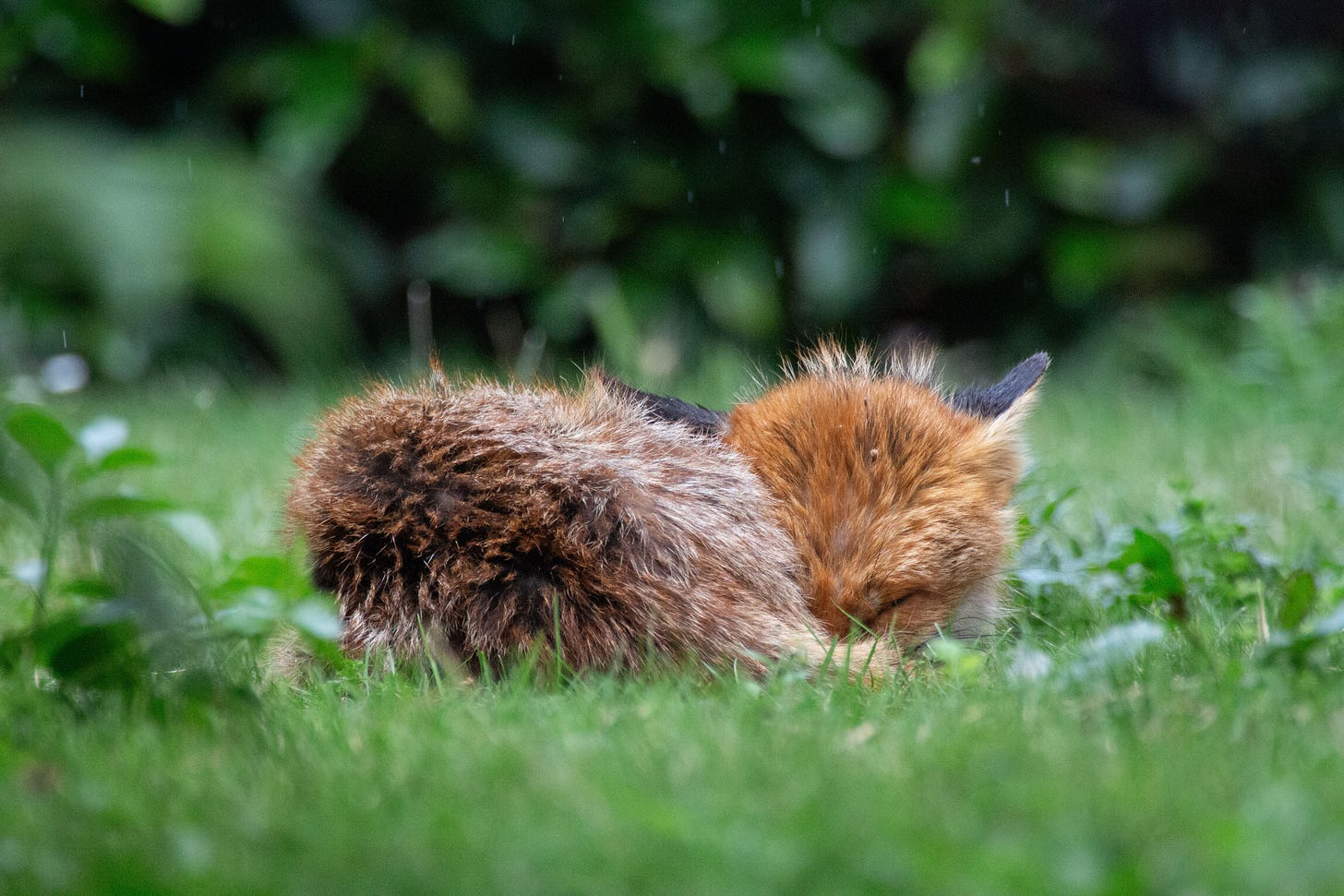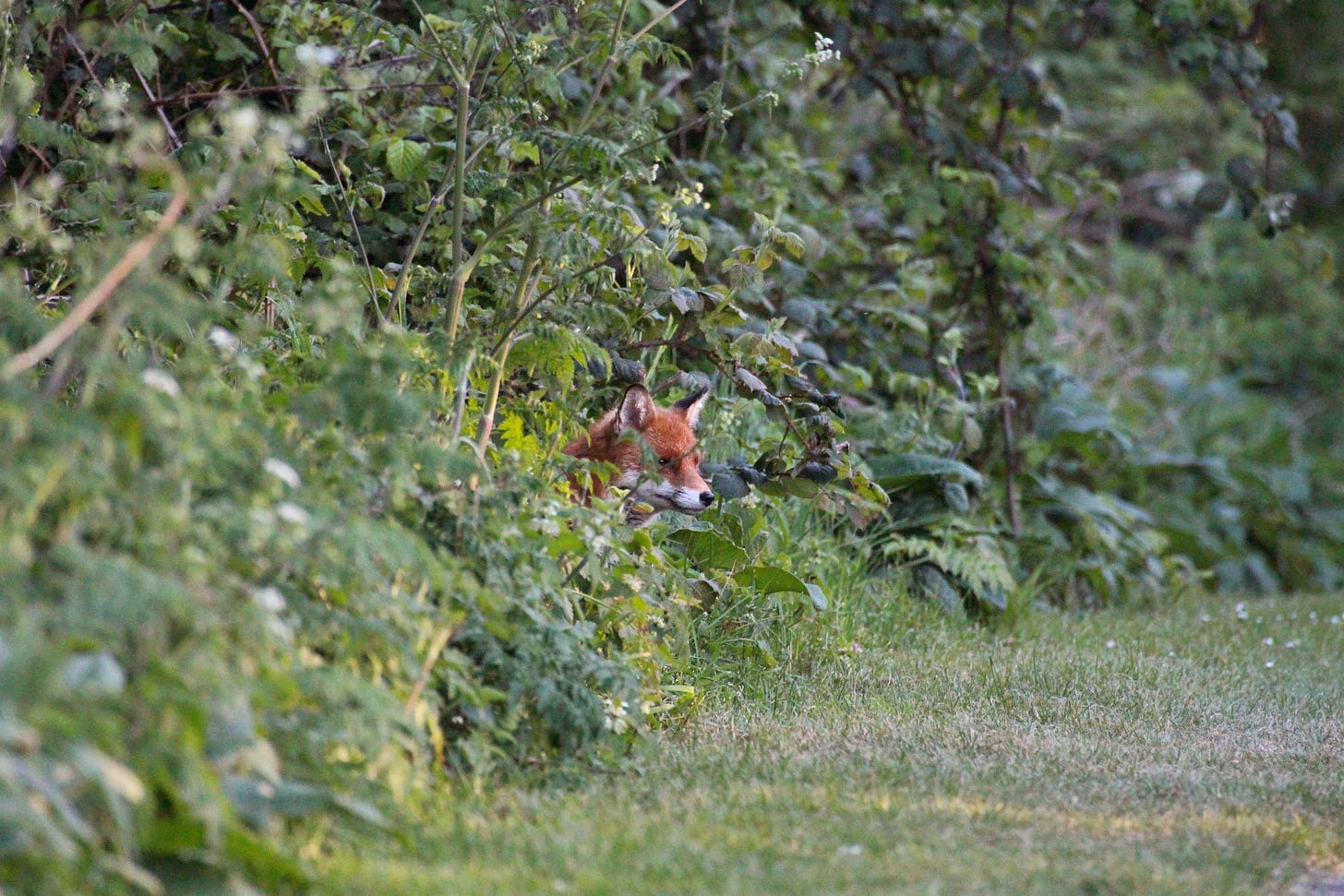The magic of foxes
Masters of adaptation.
It’s late at night. I’m nearly asleep, but a sudden bright light brings me back.
It’s the security light on the wall outside, triggered by an old friend, Vulpes vulpes.
The fox.
I’ve made it a habit to jump out of bed as soon as the light switches on to try and snatch a glimpse of this graceful nocturnal mammal before it slinks off into the darkness again. I always get a kick out of it, like I’m getting a brief insight into a very different world.
The other morning I spotted something from the kitchen window. It took me a moment to realise what it was, but I managed to get downstairs with my camera in time:
Foxes, as well as being woodland creatures, have adapted brilliantly to urban life. They have an omnivorous diet of whatever scraps you happen to have put in the bin that evening, as well as small mammals, eggs, and even birds.
The foxes in our neighbourhood cross over between the street and the wetlands where there are plenty of goose eggs and sometimes goslings to pilfer, but many foxes are perfectly comfortable roaming densely populated streets.
You’ll likely be familiar with the wild noises they make in the winter, during breeding season, when female foxes are calling for a mate. It might sound like they’re in monstrous pain but they’re just looking for a little bit of love.
I’m not sure what it is, but there’s something I find really captivating about the fox. Perhaps it’s the ethereal way in which they glide through streets and parks, mostly unseen and unnoticed by people and even dogs. I’ve seen them vanish into bushes, weave between houses and disappear down alleys just feet from oblivious passers-by glued to their phones.
Perhaps what I love the most is when I’m out late and I spot a fox - and the fox spots me. It sits, maybe in the warm glow of a streetlamp, and we look at each other for a while. When it’s ready to move on, it might take a few steps before looking back to see if I’m following. Sometimes it feels like it wants me to follow it, and this could be the beginning of some kind of magical fox-guided adventure.
But mostly I love their gentle, graceful nature.
Yet, as seems to be the case with much injustice in the world, their beauty doesn’t stop them being the victims of persecution. Fox hunting was banned by the Hunting Act 2004 in England and Wales, and the Protection of Wild Mammals (Scotland) Act 2002 in Scotland, but extensive evidence recorded by campaigners suggests these laws are regularly broken up and down the country.
Under the pretence of ‘pest control’, foxes continue to be chased, mauled and killed by packs of dogs led by riders on horseback. Organisations such as the League Against Cruel Sports dedicate themselves to exposing illegal fox hunting, and putting an end to blood sports.
The persistence of fox hunting as well as the aggressive behaviour of its supporters directed towards environmental campaigners like Chris Packham highlight that the conflict between humans and nature is still very much present throughout our culture. Reversing the trends of dramatic wildlife decline and biodiversity loss will require reshaping the unbalanced relationship between humans and nature at the heart of our society.
It’s not just foxes that bear the brunt of human brutality, either. Badger culling, the burning of peat for grouse shooting, and international whaling are all symptoms of a broken system and must be addressed if we are to give our natural systems a better chance of recovering.
Economic and cultural debates aside, I personally can’t wrap my head around the popularity of hunting for entertainment. When the fox and I watch each other we share a brief moment in time and space and I get that kick - that moment of wonder of being so close to nature, of sharing a connection with another living being - and that is a far better feeling than hunting could ever give me.




